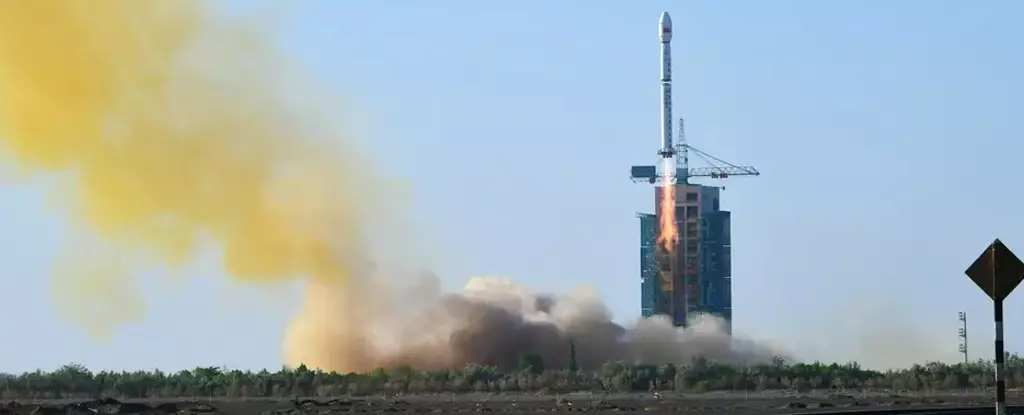A Chinese space firm, Tianbing Aerospace Technology, recently made headlines for an unexpected incident involving the launch of its Tianlong-3 rocket. During a test, the rocket accidentally lifted off from its launchpad, eventually crashing into a nearby mountainside. This catastrophic event was the result of a structural failure that led to the premature separation of the rocket from its intended stationary position. Videos captured by multiple individuals in the nearby city of Gongyi, in Henan province, show the rocket ascending into the sky before spiraling downward and exploding in a fiery crash upon impact with the ground. The statement released by Tianbing confirmed that the rocket disintegrated upon impact with the mountain. Fortunately, the explosion caused only a local fire that did not encroach upon any residential areas, and no injuries were reported as a result of the incident.
The Tianlong-3 rocket, designed by Tianbing Aerospace Technology, is touted as a pivotal development in China’s space industry. Described as comparable to SpaceX’s Falcon 9, the Tianlong-3 is a liquid-propellant rocket that, like its counterpart, is intended to deliver satellites to orbit. With a take-off mass of 590 tons, only slightly less than the Falcon 9’s 605 tons, the Tianlong-3 has the potential for up to 10 trips of partial reusability. Tianbing’s emphasis on reusability aligns with the ethos of other aerospace companies, such as SpaceX, which champions the use of reusable rockets as a means to furthering humanity’s presence in space exploration.
Tianbing Aerospace Technology, among several Chinese private space rocket companies gaining prominence in recent years, has pursued innovative ventures such as the Tianlong-2 – another reusable rocket propelled by coal-based kerosene. The development of the Tianlong-3, with its revolutionary power system comprising nine engines, marks a significant milestone for China’s space industry. Tianbing projects that the Tianlong-3 will outperform any other carrier rocket currently under development in the country, boasting three times the power of China’s previous industry benchmark.
Following the accidental launch of the Tianlong-3, Chinese individuals took to online platforms to discuss the incident. Some commentators drew comparisons between the mishap and the early challenges faced by SpaceX during the development and testing of its Falcon rockets. One Weibo user remarked that past setbacks with SpaceX’s Falcon 9 had also involved numerous explosions, suggesting that the Tianlong-3’s ignition of all nine units in parallel could still be considered a significant advancement, indicating a 70 percent success rate.
The incident with the Tianlong-3 occurred shortly after Chinese leader Xi Jinping highlighted the importance of technological advancement in China’s science sector. Jinping called for increased collaboration between the state and private entities to accelerate China’s competitiveness in the realm of technology development. Emphasizing the urgency of innovation and the need to claim a prominent position in the global tech landscape, Jinping’s remarks underscored China’s ambition to secure a leading role in the ongoing space race.
The accidental launch of Tianbing Aerospace Technology’s Tianlong-3 rocket serves as a poignant reminder of the challenges and risks inherent in pioneering developments within the space industry. As China continues to make strides in technological innovation and exploration, incidents like this underscore the importance of rigorous testing and adherence to safety protocols in pushing the boundaries of space exploration.


Leave a Reply